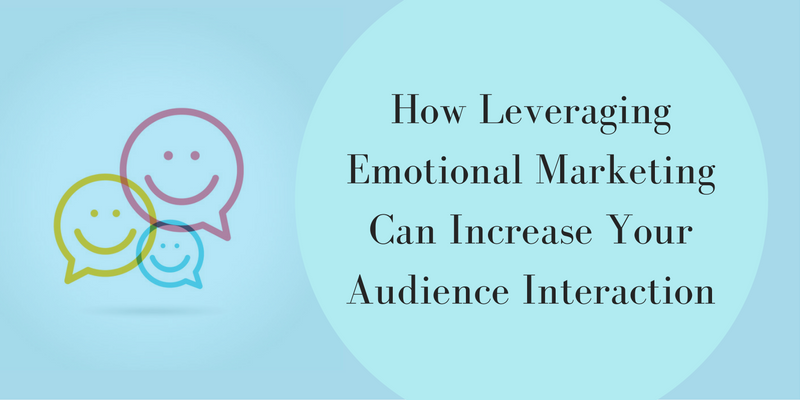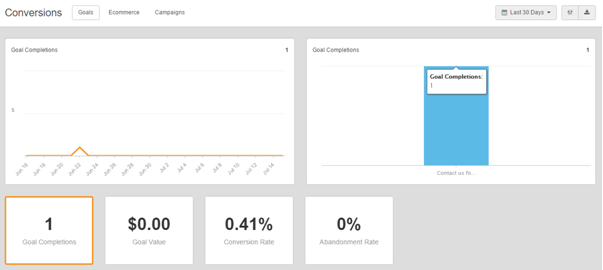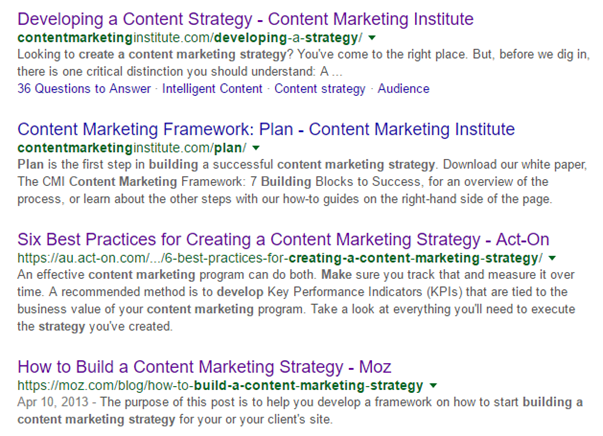[Editor’s note:]
Aaron Gray is the co-founder of Studio 56 and is a passionate digital marketing expert who has worked with some of the largest digital marketing agencies in Australia. He has been working in the digital marketing field for ten years. Aaron loves to travel the world to not only enhance his cultural experiences but learn and enhance his skills in the digital marketing industry. He is dedicated to helping others reach their online marketing goals.
Developing a digital marketing strategy that brings success to your marketing efforts can be a challenge. There are so many different marketing avenues that you can use in order to target your audience and gain the interaction you’re looking for. However, with all the different marketing avenues available to use, many don’t take into consideration emotional marketing. Emotional marketing is a great strategy to use in order to build more interaction and passion from your readers. So what is emotional marketing you ask? How can emotions help to boost interaction from your audience? All these questions and more will be answered! This expert guide will give you detailed information on how leveraging emotional marketing can increase your audience interaction. But first….
What Is Emotional Marketing?
Emotional marketing is the process of marketing a message which builds and triggers the ego and emotions from your target audience. Emotional marketing when done right can boost a company’s overall conversions through triggering your audience’s emotions and by making them to feel smarter, sophisticated, or just good about themselves in general. This in turn encourages your audience to interact through sales, page views, and comments etc. When this emotional triggering occurs it then transforms a brand into a friend instead of a status. This is why popular brands such as Coca-Cola and AAMI Insurance (Rhonda + Ketut) marketing campaigns work well because they speak to the audience at a deeper level making them feel connected with the ad they’re offering.
For example:
Coca Cola features the Hulk and Ant-Man in this ad which brings relatable emotions along with excitement to us by introducing favourite characters we know.
AAMII Insurance used two characters over a series of ads which helped to build the character’s relatability on a more personal level. Rhonda and Ketut resonates with the audience, still today, because it’s something that many of us dream about. Meeting a tall, dark and handsome stranger and falling in love.
How Emotions Can Boost Your Audience Interaction
Connection – Targeting emotions through your marketing has the ability to provide a connection with your audience by making them feel different emotions. Brands that trigger happiness, anger, or sadness from their audience have a higher chance of really driving home conversions through sales, subscriptions or downloads.
Convinces Them To Act – Targeting emotions can convince your audience to act through a high level of trust in your company to creating an urgent situation where they act spontaneously.
Gives Them What They Want – Triggering emotions from your audience means you’re giving them what they want. If you trigger happiness, it means they want what you have to offer. Triggering anger, means you’ve hit a point they’re passionate about and want to fight for. Giving your audience what they want can really drive their interaction to your company, because, let’s face it, everyone likes to get what they want at some point in their lives.
Ways To Trigger Emotions Through Different Practices
Writing Content That Triggers Emotional Responses
Content marketing is one of the key areas that can be used in order to trigger emotions from your audience. However, the tricky part about implementing a content marketing strategy is creating one that drives and triggers an emotional response. In order to do this, you need to write in a way that engages them. This will help you build stronger relationships between you and your audience, which in turn can help you build more interest, trust, sales and subscriptions. So how do you write content that triggers emotions? There’s one formula to this, and that is you need to aim in getting a ‘yes’ response from your audience. When your audience is engaged more with what you have to say, they’ll think:
- ‘Yes, I understand what you’re saying’
- ‘Yes, I can really relate to this, it’s like they know me inside and out’
- ‘Yes, I like this, I want to know more’
However, when aiming to get that ‘yes’ from your audience you need to remember not to push too hard and fast with your efforts as this will cause a negative reaction and shut your readers down. When starting your new content marketing efforts based upon emotional marketing, you should start by:
- Creating content that resonates with your audience. Content that builds trust and that makes them feel welcome and like you know them from the inside out. Storytelling or writing relatable stories, which we’ll cover down below in the next main point, is a great way to build that trust and connect with your audience.
- Once you have gained the trust from your readership, you can work slowly on getting them to sign up or buy from your business. Remember your readers want to know if you’re looking out for them, if you’ve understood their problem, and what they’ll be getting from you in return for their trust and loyalty. So try to write content that aims towards making your readers understand what you’re offering with these three points.
Want Help With Your Content Marketing?
 The 3 Pillars Guide Will Get You Focused on The Right Things - At The Right Time. Enter your email address to get it now
The 3 Pillars Guide Will Get You Focused on The Right Things - At The Right Time. Enter your email address to get it now
Share Relatable Stories That Provide Connection With Your Audience
Relatable stories or story telling is a great way to really provide a deeper connection with your audience and bring out emotional responses as suggested above. The deeper the connection, the more interaction you’ll receive. The trick to writing relatable stories is to first work out the problems of your target audience before writing and sharing a story where you’ve been in the same situation but this is how you got out of it. See the example below:
Target Audience
Low income earner, just getting by, has 3 kids, wants to earn a living from home so they don’t have to worry about fuel costs, child care etc, but they can’t find the right thing for them.
Relatable Story Example
‘Are you tired of never making enough money from your day job? Need to stay home because you don’t have enough money to put your kids in daycare? I’ve been there, done that, and like you I was always struggling to get by. Bills would pile up and all I wanted to do was somehow find a way to stay at home to look after my children, but still make the money I needed to, to live. Have you ever felt like this? Well if you’ve been where I’ve been, then there is a ray of sunshine at the end of the dark cloud. When I thought the darkness wasn’t ever going to end, I came across a life changing opportunity which gives me the freedom to make all the money in the world while still being able to look after my children! And I want to share it with you! Yes that’s right you, because I’ve been where you’ve been and I don’t want others to struggle like I did now that I’ve found….’
As you can see the story above relates well to the target audience. It resonates with them, and triggers their emotions by wanting to have what the author has. They want to have a lifestyle change, they want to have money, they want to be able to stay at home and work. By working relatable stories into your content you have a higher chance of really engaging your audience.
Use Specific Colours When Designing Products/Websites
Did you know the colours you use on your products and website can actually trigger emotions? It’s true. Colours have a way of highlighting different emotional responses within people and by using the right colours you have a better chance of really triggering an emotional response from your target audience. Examples of colours and their emotional responses are below:
When choosing colours for your website try to stick between 2 to 3 colours. Any more and it will feel cluttered and overwhelmed. Also choose colours which best represent your business. For example, if you run a:
- Baby Store – Pink, Blue, and Purple may be the best options.
- Financial Advisory Company – Black, White, and Red may be the best options.
When choosing colours try to match them together well. Don’t just add a colour because you like it. It has to match your brand’s voice. If you find 3 colours are too much, drop it back to two.
Examples of sites that bring out emotional feelings are below:
Vitality Dental’s Website – This website gives off a warm, relaxed, yet professional feel that makes you trust what they have to offer. You also get the inclination they’re a friendly website.
Alienware Website – Alienware uses a black and grey colour combination which signals high quality and expensive computer equipment. It also has a sense of a well-established website.
Write Content Which Focuses On The Reader’s Problem And Find A Solution
The human race is drawn to problems whether we like to think so or not. Problems attract us in a way where it starts to bring out stress and anxiety amongst your audience. Although bad for your audience it can be good for your business. When developing content try to develop it towards solving your audience’s problems.
To do this, however, you have to go beyond their expectations and deliver them an in-depth solution to their problem. You also need to go beyond identifying what the problem is and find out what emotions they’re triggering for your audience. Most problems will cause feelings of fear, inner conflict, loss, and alarm. These emotions are what you need to focus on fixing in order to gain the reaction you’re looking for.
For your audience their alarm will start at apprehension, and as the problem continues on in their life, it turns into fear, terror, and loss. In finding a solid solution to their problem they will be forever grateful to you as they see you as their saviour, as the business that removed this stress from their life. In return they will promote your business through word of mouth which will enhance more and more interaction from more people.
When creating the solution to their problem, you must make sure it mirrors it exactly for proper connection to develop between you and your audience. The solution should also answer their question in detail so they feel complete, calm, and resolved.
An example is as follows:
- The Problem – They own a website which has gone down.
- The Agitator – They didn’t know the website was down until angry customers on social media bring it to their attention.
- The Solution – You can provide them with a product that allows instant updates and notifications when the website goes down so they can fix it as soon as possible.
- The Outcome – They have working site and you have a loyal customer. It’s a win/win situation.
EXAMPLE
The Problem – As you can see people want to know how to build a powerful content marketing plan.
The Agitator – There’s not enough conversions coming in.
The Solution – Many websites have come up with detailed solutions to help people overcome the problem at hand.
Use Fascination Triggers And Enticing Questions To Trigger Interaction
Fascination triggers are just as the name suggests, they provide a trigger point based upon something that’s really interesting. These triggers are designed to arouse the audience’s interest in what you have to offer. Fascination brings excitement, mystery, urgency and passion to your business. The more interesting it is, the more people are going to interact with your business. In order to create a fascination point, you really do need to be creative. When introducing new marketing concepts, suggest a statement or ask an interesting question that begs for an answer. As an example you may come across a billboard with the words ‘Your data should belong to the NSA’, as seen in the image below. Instantly, your curiosity peaks and you’re wanting to know more about this statement like:
- Why should my data belong to the NSA?
- Who created this ad?
- Who would suggest such as thing?
Fascination is a powerful emotion to target to gain more interest in your cause, products or business. However, when it comes to answering the question posed to your audience you need to be ready to answer the question in detail with a descriptive story. Something they can relate to and brings out emotions that will drive them to transform into a dedicated reader or customer. If facts are stated, they always need to be backed up by references or evidence as this will also help build more connection between your brand and your targeted audience.
Overall
When it comes to leveraging emotional marketing in your digital marketing efforts, you can understand why it can be a powerful strategy to use. So are you going to incorporate emotional marketing to boost your audience interaction?








